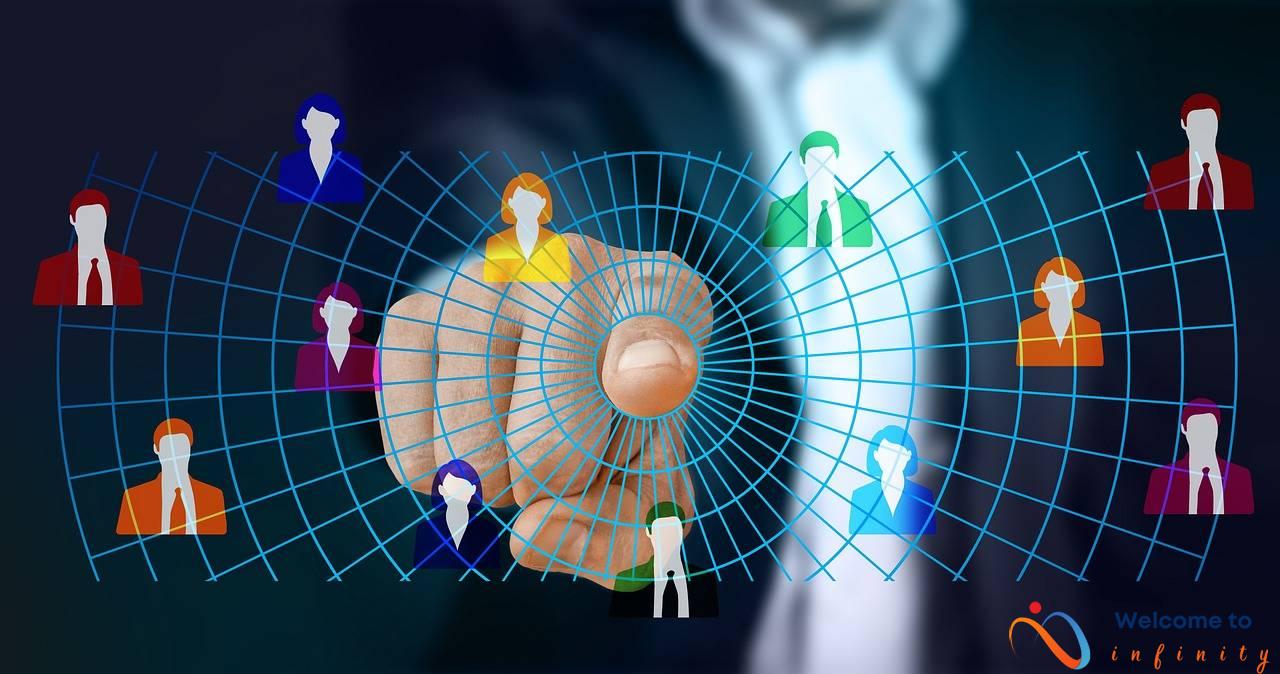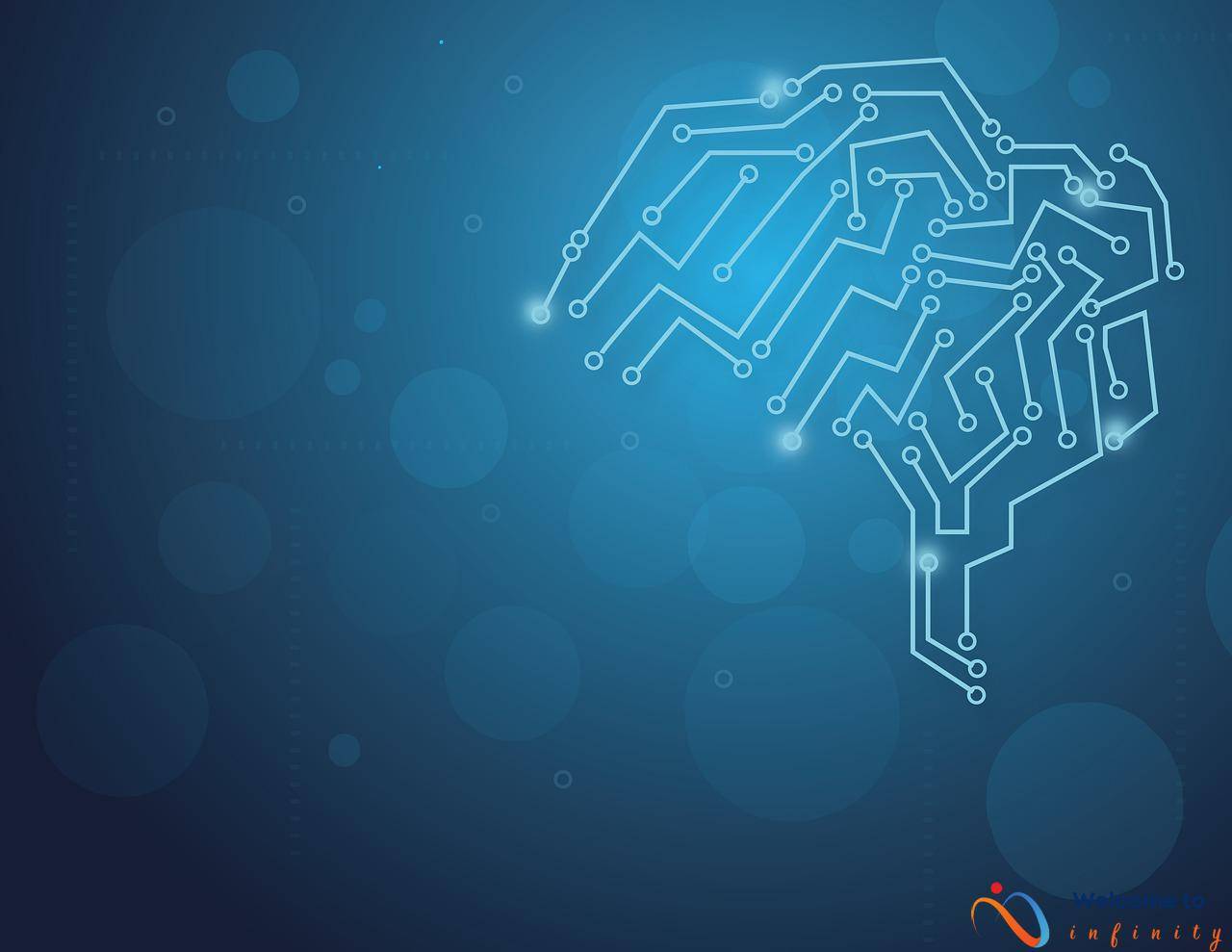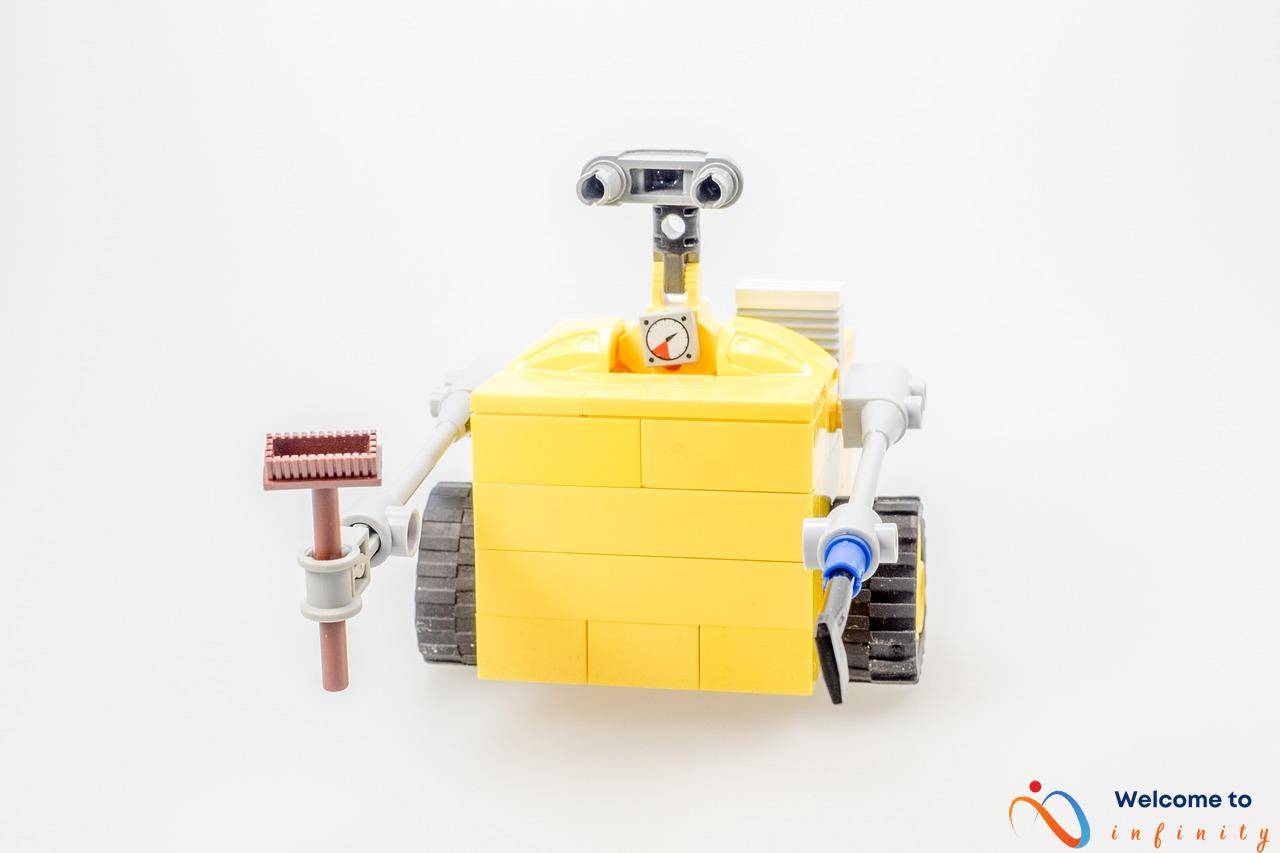Machine learning has revolutionized the way we think about artificial intelligence. It is a field that deals with creating algorithms capable of learning from data and making predictions or decisions based on that learning. The ability to learn from data makes it possible for machines to improve their performance over time, making them more accurate, efficient, and effective.
In this article, we will introduce you to the key concepts and algorithms of machine learning. We begin with supervised learning, which is a type of machine learning where the algorithm is trained on labelled data to predict an output variable based on an input variable. We will also cover unsupervised learning, which is another type of machine learning where the algorithm needs to identify patterns and relationships in unlabelled data without any predetermined output.
Clustering is a major subfield of unsupervised learning, which involves grouping similar data points together based on their characteristics. K-Means Clustering and Hierarchical Clustering are two popular clustering algorithms that we will explore in detail. Association rule learning is another subfield of unsupervised learning that involves discovering interesting relationships between variables in a dataset.
Reinforcement learning is a different kind of machine learning where an algorithm learns to take actions based on the feedback it receives from the environment. Finally, we will talk about deep learning, which is a subfield of machine learning that uses neural networks to learn hierarchical representations of data. Convolutional Neural Networks and Recurrent Neural Networks, which are two types of deep learning algorithms, will be introduced in this article.
Supervised Learning
Supervised learning is a fundamental concept in machine learning where the algorithm is trained with labelled data to predict an output variable based on given input variables. The input variables are also known as features, and the output variable is the target variable. In supervised learning, the algorithm tries to learn the relationship between the input and output variables.
Supervised learning is broadly classified into two categories: regression and classification. Regression is used when the target variable is continuous, whereas classification is used when the target variable is categorical. For example, in a regression problem, the algorithm could predict the price of a house based on its features, such as the number of bedrooms, square footage, and location. In a classification problem, the algorithm could predict whether an email is spam or not based on its features, such as the words used in the email.
Supervised learning models are trained using various algorithms such as linear regression, logistic regression, decision trees, and neural networks. These algorithms have different properties and are used depending on the nature of the problem and the available data. The performance of the model is evaluated using metrics such as accuracy, precision, recall, and F1 score.
In conclusion, supervised learning is an important concept in machine learning where an algorithm learns from labelled data to predict an output variable based on input variables. It is used in regression and classification problems and involves training the algorithm with various models to evaluate its performance.
Unsupervised Learning
Unsupervised learning is a fascinating branch of machine learning that deals with the analysis of unlabelled data. Unlike supervised learning, where the algorithm is trained on labelled data to predict an output variable based on an input variable, unsupervised learning relies on the algorithm to identify patterns and relationships in the data without any predefined output.
One of the most popular subfields of unsupervised learning is clustering. Clustering involves grouping similar data points together based on their characteristics. There are several clustering algorithms available, but two popular ones are K-Means and Hierarchical clustering.
K-Means clustering aims to partition a dataset into k clusters by iteratively minimizing the sum of squared distances between each point and its assigned centroid. On the other hand, hierarchical clustering forms a hierarchy of clusters by iteratively merging the closest pairs of data points.
Another subfield of unsupervised learning is association rule learning. This involves discovering interesting relationships between the variables in a dataset. The goal of association rule learning is to find dependencies or correlations between different features of a dataset.
Unsupervised learning is a powerful tool for discovering hidden patterns and relationships in data. It has several applications in fields such as marketing, finance, and biology. For example, unsupervised learning can be used to segment customers based on their purchasing behavior, identify anomalous transactions in financial networks, and cluster genes based on their expression patterns.
In conclusion, unsupervised learning is an essential technique in the machine learning field that can help in analyzing vast amounts of unlabelled data to discover hidden patterns and trends. With the emergence of big data, unsupervised learning has become critical in various domains and holds the promise of unlocking new insights into complex problems.
Clustering
Clustering is a fundamental subfield of unsupervised learning, which is used to group together similar data points based on their common features. The primary goal of clustering is to identify natural clusters within a dataset and assign similar data points to the same group. The data points within a cluster should have similar characteristics, while those in different clusters should have distinct features.
Clustering algorithms are widely used in various domains, such as marketing, biology, computer vision, and social network analysis. The clustering process can be done in two ways: hierarchical and non-hierarchical. In hierarchical clustering, the data points are grouped into a tree-like structure, whereas in non-hierarchical clustering, the algorithm identifies a fixed number of clusters without forming any hierarchy.
The most popular clustering algorithms are K-means and Hierarchical clustering. The K-means algorithm partitions the data into K clusters, where each cluster has a centroid that represents the data points' mean values in that cluster. Initially, it randomly selects K centroids and assigns each data point to the nearest centroid. After that, it iteratively updates the centroids' positions until they converge to a stable solution.
Hierarchical clustering, on the other hand, creates a hierarchy of clusters by merging the closest pairs of data points iteratively. In hierarchical clustering, we can have two types: Agglomerative and divisive. In Agglomerative clustering, each point is initially treated as a separate cluster, and then iteratively, the most similar pairs of clusters are merged until a single cluster is formed. Divisive clustering, on the other hand, initializes the entire dataset as a single cluster and iteratively splits it into smaller clusters.
Clustering is an essential method used in many areas of data science. It is a powerful tool for discovering hidden patterns, detecting anomalies, and segmenting similar data points in various domains, including customer segmentation, fraud detection, image segmentation, and more. The effectiveness of clustering techniques relies on the quality of the data, the choice of the appropriate algorithm, and the interpretation of the results.
K-Means Clustering
K-Means clustering is a widely used algorithm in machine learning, especially for unsupervised learning problems. The algorithm clusters similar data points together into k groups, where k is a pre-determined value set by the user. The algorithm works by iteratively minimizing the sum of squared distances between each point and its assigned centroid.
The K-Means algorithm works in the following way:
- The user selects the value of k, which represents the number of clusters
- The algorithm randomly selects k data points, which become the initial centroids of each cluster
- Each data point is assigned to the closest centroid based on the Euclidean distance between the point and the centroid
- Once all data points are assigned to a centroid, the centroid is updated by calculating the mean of all the data points assigned to it
- The process of assigning data points to centroids and updating centroids is repeated until the algorithm converges and the assignments no longer change
The result of the K-Means algorithm is a cluster assignment for each data point in the dataset, represented by a label or index. K-Means is commonly used in image processing, data compression, and exploratory data analysis.
One caveat of K-Means is that the user must pre-determine the value of k, which can be challenging in some cases. Additionally, K-Means is sensitive to the initial placement of the centroids and can be prone to finding suboptimal solutions.
Hierarchical Clustering
Hierarchical clustering is a commonly used algorithm in unsupervised learning that is used to group similar data points into clusters. The algorithm works by forming a hierarchy of clusters, where individual data points are grouped into clusters and these clusters are then grouped into larger clusters based on their similarity.
The process of hierarchical clustering begins by assigning each data point to its own separate cluster. The algorithm then calculates the distance between all pairs of clusters and merges the closest pair of clusters. This process is repeated iteratively until all the data points belong to a single cluster.
There are two types of hierarchical clustering: agglomerative and divisive. Agglomerative clustering starts with each data point in its own cluster and iteratively merges the closest pair of clusters until all data points belong to the same cluster. Divisive clustering starts with all data points in the same cluster and iteratively splits the cluster into smaller clusters until each data point is in its own cluster.
Hierarchical clustering is particularly useful when the number of clusters is not known beforehand and when the data contains nested or hierarchical structures. It provides a useful visualization of data in the form of a dendrogram, which shows the hierarchical relationships between clusters.
Overall, hierarchical clustering is a versatile and powerful algorithm that can be applied to a wide range of unsupervised learning problems.
Association Rule Learning
Association rule learning is a powerful technique that finds interesting patterns and relationships within datasets. In this subfield of unsupervised learning, the goal is to discover frequent itemsets, which are groups of items that often occur together in a dataset. This can be used to identify underlying trends or connections between variables that are not immediately apparent, such as customer purchase behavior in a retail setting.
The most common algorithm used in association rule learning is called the Apriori algorithm. This algorithm works by first finding all itemsets that occur frequently in the data, and then generating rules based on those frequent itemsets. A rule consists of an antecedent (the items that must be present) and a consequent (the items that are likely to be present if the antecedent is present).
For example, suppose we are analyzing customer purchasing data for a grocery store. We might find that 50% of customers who buy cereal also buy milk, and 30% of customers who buy eggs also buy bacon. Using association rule learning, we can generate rules such as “if a customer buys cereal, they are likely to buy milk” and “if a customer buys eggs, they are likely to buy bacon.”
Association rule learning can also be used for other types of data, such as webpage clicks or medical diagnoses. The insights gained from this technique can help organizations make data-driven decisions and improve their operations.
- Association rule learning is a subfield of unsupervised learning
- The goal is to discover frequent itemsets and generate rules
- The Apriori algorithm is commonly used
- It has applications in various industries and can provide valuable insights
Reinforcement Learning
Reinforcement learning is one of the three main types of machine learning, alongside supervised and unsupervised learning. In this type of learning, an algorithm is designed to learn through trial and error, taking actions based on the feedback it receives from the environment.
The algorithm is given the task of maximizing its reward, which it achieves by taking the appropriate actions based on the environmental feedback it is receiving. This type of learning is particularly useful in situations where there is no predefined output or labeled data to train the algorithm on.
Reinforcement learning has a wide range of applications, including robotics, game development, and resource management. For example, reinforcement learning has been used to develop robotic systems capable of navigating complex environments, such as flying a quadcopter through a narrow space while avoiding obstacles.
A key component of reinforcement learning is the agent-environment loop, where the agent takes an action in the environment and receives a reward or penalty based on the outcome of that action. This feedback is then used to adjust the agent's behavior, with the goal of learning the most effective actions to take in order to maximize its reward.
Overall, reinforcement learning is an exciting field that holds great promise for developing intelligent systems capable of learning and adapting to their environments. It is a powerful tool for solving complex problems in a wide range of fields, and it is poised to become even more important as machine learning technology continues to evolve and mature.
Deep Learning
Deep Learning:
Deep learning is a powerful subfield of machine learning that is capable of processing vast amounts of complex data and extracting meaningful patterns and relationships. At its core, deep learning involves the use of artificial neural networks with multiple interconnected layers that can learn and represent hierarchical features of complex data. These networks can effectively capture intricate patterns in visual, speech, and other types of data, making them one of the most popular techniques for solving complex machine learning problems.
One of the primary advantages of deep learning is its ability to automatically learn features from raw data. This eliminates the need for manual feature extraction which makes it highly suitable for complex datasets with a vast number of interdependent features. Deep learning algorithms can also learn from unlabelled data, making it particularly useful for unsupervised learning tasks.
There are several types of neural networks used in deep learning, each suited to processing different types of data. Convolutional neural networks, for instance, are specifically designed for analyzing visual data such as images and videos, while recurrent neural networks are used for sequential data like natural language and time series information.
Overall, deep learning has been applied to various fields such as computer vision, natural language processing, and speech recognition, leading to exciting breakthroughs across different industries like healthcare, finance, and transportation.
Convolutional Neural Networks
Convolutional Neural Networks (CNNs) have revolutionized the field of computer vision and image analysis. These deep learning algorithms are specifically designed to extract features and patterns from visual data such as images and videos. They are based on the mathematical operation of convolution, which involves sliding a small filter over an image to perform element-wise multiplication and then summing up the results to produce a feature map.
CNNs typically consist of multiple convolutional layers that help in feature extraction, followed by one or more fully connected layers that perform classification or regression tasks. The filters used in convolutional layers can learn different features such as edges, corners, and textures from the images, making CNNs highly effective for image recognition and object detection tasks.
CNNs have many practical applications, including medical imaging, self-driving cars, and security systems where they can be used to detect anomalies or threats. One example of a CNN application is in facial recognition technology, where the algorithm can learn to identify specific features such as eyes, nose, and mouth to accurately classify and recognize faces.
Overall, CNNs are a powerful and promising deep learning technique that has the potential to revolutionize the field of computer vision. They are highly effective in analyzing visual data and have numerous practical applications, making them an essential tool for researchers and developers in the field of machine learning and artificial intelligence.
Recurrent Neural Networks
Recurrent neural networks (RNN) are a type of deep learning algorithm that is widely used for processing sequential data such as time series and natural language. Unlike other neural networks, RNNs can analyze and model the temporal dependencies present in sequential input data, which makes them highly effective in tasks such as speech recognition, image captioning, and language translation.
The key advantage of RNNs over other neural networks is their ability to process variable-length sequences of input data. This is made possible by the use of recurrent connections within the network, which allow information to be stored and passed on from one input to the next. This allows the network to learn long-term dependencies and context, which is crucial in certain applications.
RNNs use a special type of neuron called a recurrent neuron, which takes as input not only the current input but also the output of the previous neuron in the sequence. This creates a loop in the network, allowing it to maintain a “memory” of previous inputs and decisions. This is what makes RNNs so powerful in sequential data processing.
There are different types of RNNs, such as the simple RNN, the Gated Recurrent Unit (GRU), and the Long short-Term Memory (LSTM) network. The LSTM network is particularly useful for handling long-term dependencies as it includes a memory cell and three gating mechanisms, enabling it to selectively remember or forget previous information.
In summary, RNNs are a powerful type of deep learning algorithm capable of processing sequential data such as time series and natural language. They use recurrent connections and recurrent neurons to “remember” previous inputs and decisions, enabling them to model long-term dependencies and context. Different types of RNNs exist, each suited to different types of applications.











